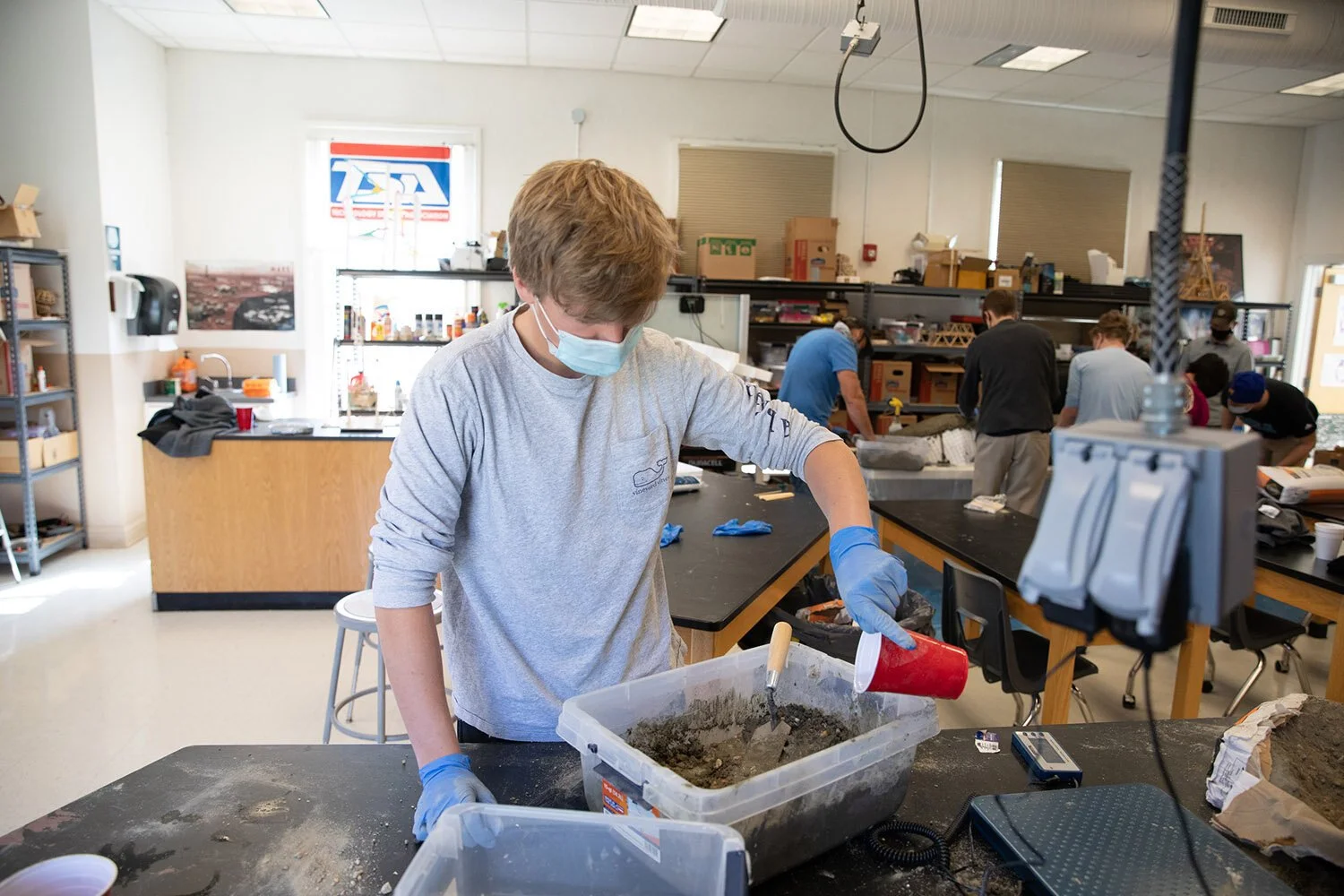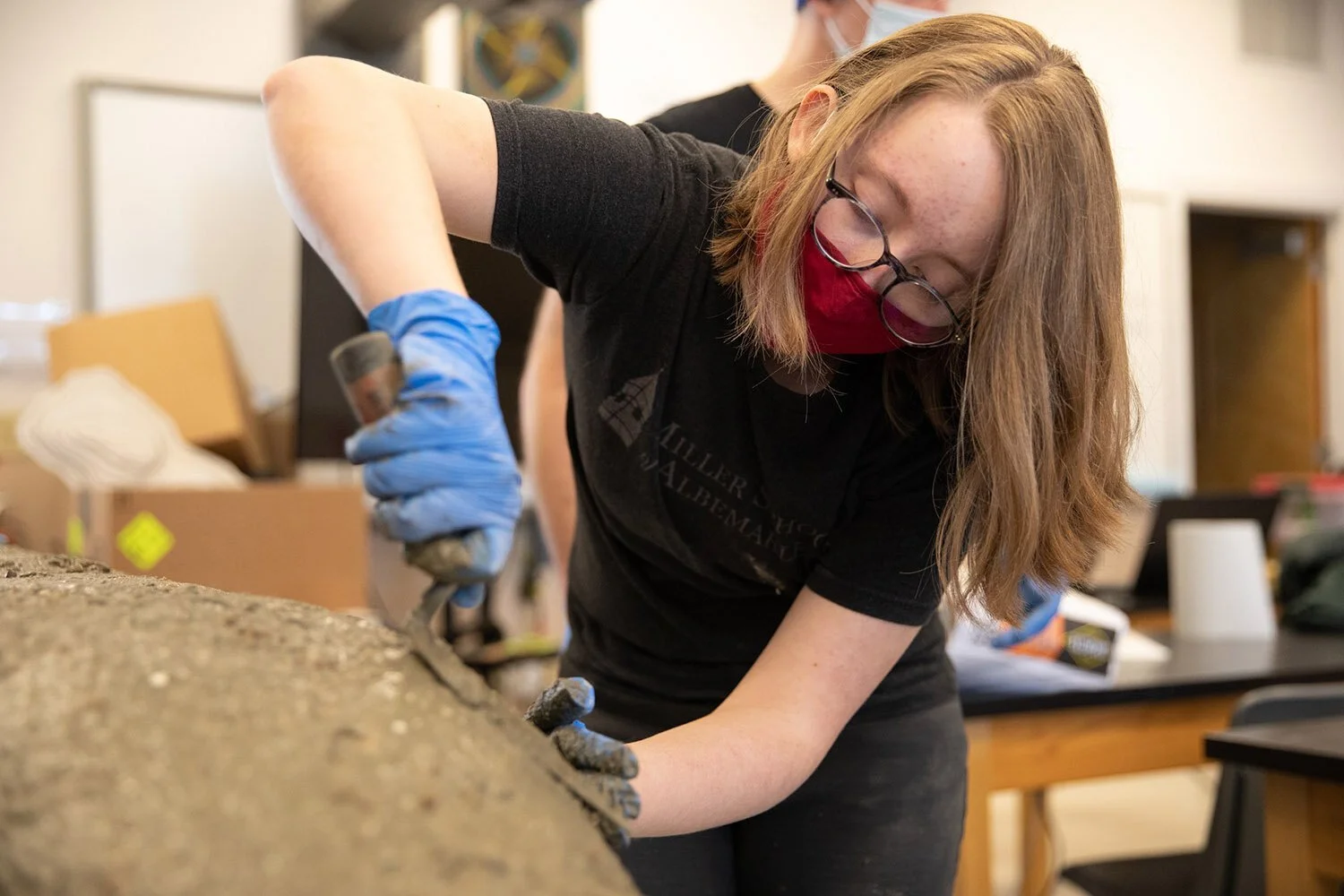Road for the Canoe
Engineering students work quickly to sculpt the canoe.
About six years before the American author Henry David Thoreau arrived in Walden Pond, he took a two-week canoe trip on the rivers of Massachusetts and New Hampshire. His time on the river is credited as one of the reasons he became an environmentalist. After the trip, Thoreau wrote, “Wherever there is a channel for water, there is a road for the canoe.”
While Thoreau is typically discussed in English classes, this particular episode in his life has a connections to MSA’s Applied Engineering Program this spring. Civil Engineers typically design complex structures such as roads, bridges, tunnels, airports, and railways. In some ways, Civil Engineering seems to be pointed in the opposite direction of the simplicity celebrated by Thoreau in his writing.
MSA’s Applied Engineering Program are using their mathematical and construction skills to engineer a canoe. At first glance, “building a canoe” might seem a bit too simple for an advanced high school engineering class. However, it is extremely complex and challenging.
Led by Applied Engineering Program Director, Ryan Henry, students (Cary Worrall, Coen Clinedinst, Bryce Leavell, Zoe Martin, and Alex Evanow) are making history this spring by becoming the first high school in America to enter the ASCE (American Society of Civil Engineers) Concrete Canoe Competition. Started in the 1960’s by a group of Civil Engineering students, who constructed and then raced concrete canoes as a fun intramural challenge, the competition has progressed into a nationally recognized annual challenge among engineering students.
In the more than 60 years since, the students' efforts to combine engineering excellence and hydrodynamic design to construct water-worthy canoes have culminated in an advanced form of concrete construction and racing technique known as the "America's Cup of Civil Engineering."
Mr. Henry explained the technical aspects of the project: “We are preparing to enter a Concrete Canoe competition in the spring of 2022 to compete against schools like UVA and Virginia Tech. We will be the first high school in the country to compete in this collegiate-only event. Our canoe this year is roughly 8' long—it needed to fit on my classroom tables. It will weigh roughly 250 lbs, depending on the success of our mix design. It's 1.25" thick with aluminum mesh reinforcement. It displaces roughly 400-450 lbs and can therefore carry 200lbs. We used algebraic equation curve fitting to determine the shape of the canoe. We are creating a male mold with plywood and styrofoam.”
After months of calculations, design, and construction, student reached an important milestone in their project on Saturday, April 3. Students poured concrete into the framework for the canoe. They had to work quickly to sculpt the canoe before the concrete dried. Students were assisted by parents who joined to help. Now it is a waiting game. The concrete takes 28 days to cure. At that point, the students will bring the 250 lbs canoe to the MSA lake to see if it floats.
Sink or float, the road to building this canoe has been one that has channeled the talents and abilities of MSA’s young engineers. Like Thoreau’s journey on his canoe trip, this project will promote a new outlook for students—one that highlights how hands-on learning can guide one’s educational journey.





